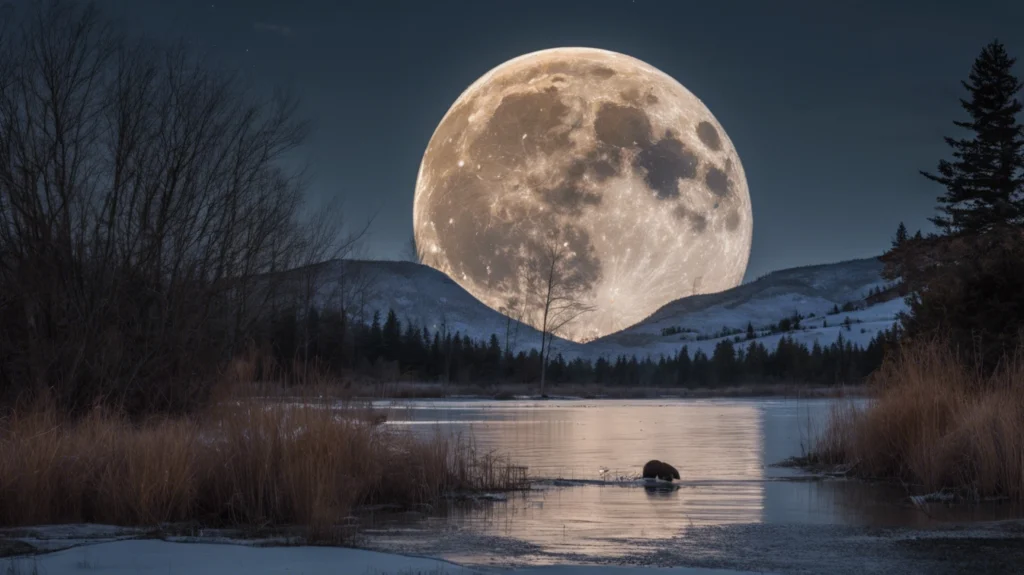Sky watchers, mark your calendars! November 2024 brings a celestial treat with the Beaver Moon, which also happens to be a supermoon. Named for the industrious beavers preparing for winter, this moon is rich in history and offers a stunning visual spectacle. Learn all about this extraordinary event, including its origins, key viewing times, and the science behind supermoons.

Why is it Called the Beaver Moon?
The November full moon earns its name from the Old Farmer’s Almanac. Beavers, known for their winter preparation habits, retreat to their lodges during this time, symbolizing readiness and resilience. Other traditional names for this moon include the Frost Moon, Freezing Moon, and Deer Rutting Moon, each reflecting the seasonal changes observed by early cultures.
When and How to View the Beaver Moon
The Beaver Moon reaches its peak on Friday, November 15, 2024, at 4:29 PM EST, according to NASA. Here’s what to expect:
- Viewing Timeline:
- Thursday: 96% illumination.
- Friday: 100% illumination at its peak.
- Saturday: 99% illumination.
- Sunday: 96% illumination.
- No Equipment Needed: Enjoy this event without telescopes or binoculars. Just look up!
What Makes Supermoons Special?
Supermoons occur when the moon is at its closest point to Earth during its full phase, making it appear larger and brighter than usual. Here are some fascinating details:
- Distance: This supermoon will be about 224,385 miles away from Earth.
- Size Difference: It will appear 6.2% larger than the year’s average full moon.
- Brightness: Expect it to shine 12.8% brighter than a typical full moon.
This enhanced visibility makes supermoons a must-see event for both seasoned astronomers and casual stargazers alike.
Looking Ahead to 2025
After November’s supermoon, enthusiasts can look forward to three supermoons in 2025:
- October 7, 2025
- November 5, 2025
- December 4, 2025
And to kick off 2026, the first supermoon of the year will grace the skies on January 3.
Quick Facts About Supermoons
- What is a Supermoon?
A supermoon is a full moon occurring at its closest orbit to Earth, appearing larger and brighter. - How Often Do They Happen?
Typically, there are 3–4 supermoons annually. - Why is it Special?
Beyond its beauty, supermoons highlight the unique interplay of Earth, the moon, and the sun.
Conclusion
The Beaver Moon of November 2024 isn’t just a celestial event—it’s a moment to connect with the natural world and centuries of tradition. As it graces the night sky, this supermoon offers an awe-inspiring reminder of the universe’s wonders. Don’t miss the chance to witness this bright and beautiful lunar display.
FAQs
Q: What is the Beaver Moon?
A: It’s November’s full moon, named after beavers preparing for winter.
Q: When will the Beaver Moon be at its peak?
A: Friday, November 15, 2024, at 4:29 PM EST.
Q: Do I need special equipment to see it?
A: No, the supermoon can be enjoyed with the naked eye.


